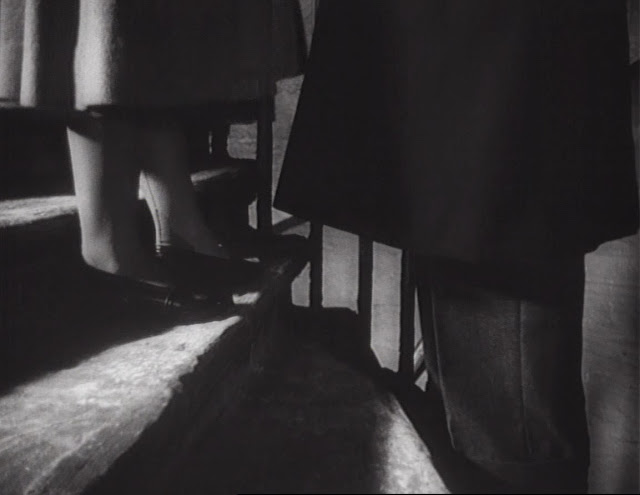The Ware Care (1938)
Although not produced under the Ealing Studios name, The Ware Case was the second film to be produced by Michael Balcon at Ealing Studios and, as such, is often recognised as being one of the starting points for that studio's legendary output. It's another of those rarely seen British films of the 1930s which is now re-available courtesy of Network DVD and Studio Canal.
The film tells the story of Sir Hubert Ware (played by Clive Brook) who is on trial for murder.
 |
| Clive Brook |
 |
| The murder scene |
He is accused of committing the murder in order to inherit money to pay off his mounting debts and thus avoid bankruptcy. This is man whose creditors seem to be mainly jewellers, tailors and others who provide him the image which is so important to him. How does he avoid his creditors and his mounting debts? He heads to the south of France where he bounces cheques, then loses the fraudulently obtained money in a casino.
 |
| Sir Hubert (Clive Brook) with his tailor Munnings (played by Wallace Evennett) |
Of course, this being a 1930s British drama, Sir Hubert's long-suffering wife Meg (played by Jane Baxter) is in love with someone, her husband's barrister friend Mike (played by Barry K. Barnes).
 |
| Jane Baxter & Barry K. Barnes |
To be honest, Meg would have been better off running off with Mike long ago - apart from gambling, passing cheques he can't honour and running up endless debts, Sir Hubert has a string of affairs and generally treats Meg with contempt. For most of the film he appears to be a thoroughly nasty man, who describes himself as an egotist, and who would never do anything in life unless it suited him. Even when he cashes the cheque in the casino and the cashier tells him that he will lose his job if the cheque bounces, Sir Hubert carries on and takes the money.
 |
| Clive Brook |
And yet, despite his faults - and even when he is cited in a divorce case - Meg sticks by him.
 |
| Jane Baxter & Clive Brook |
I won't spoil the ending since I honestly couldn't decide whether he was guilty or not. Even the repeated images of Sir Hubert viewed through bars (such as in the casino) and on the stairs of his London flat ...
... didn't convince me that he was guilty. I kept thinking it might be a red herring. Was it? I'm not telling - you'll just have to buy the DVD.
Other points of interest:
The film was directed by Robert Stevenson who later moved to the USA and directed such films as Mary Poppins, Bedknobs & Broomsticks, That Darn Cat and One of Our Dinosaurs is Missing.
The cast includes Ealing regular John Laurie as Sir Hubert's embittered gamekeeper. I noted that he wears a button-down collar shirt, something that was rather rare in 1930s England:
 |
| John Laurie |
He also wears a belt-back jacket, which was a popular fashion item for young men in the 1930s and which, according to vintage clothing collectors, are incredibly rare, with very few having survived. So it's nice to see that Barry K. Barnes also wears one:
 |
| Barry K.Barnes & Clive Brook |
For the lovers of period fashion, it's also interesting to see the sports shirt worn by Barnes:
 |
| Barry K. Barnes |
One light-hearted touch is when Sir Hubert meets a woman on the train to the south of France. A rather glorious woman, she wears acres of jewellery, a veiled hat and has a rather large fur muff in which she conceals a small dog:
By the next scene she has become Sir Hubert's latest lover (the woman, not the dog!).

























































